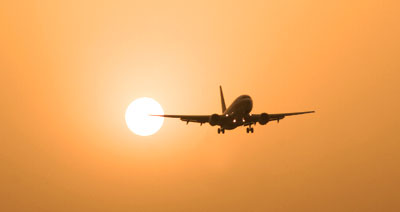Howl Elicits Response
For long the airlines had been pleading in vain with the government to rationalise airport charges as also the price of ATF

The airline industry the world over appears to be in dire straits and in India, the situation is no different. As estimates go, during the current year, airlines globally are expected to suffer a combined loss of $9 billion (Rs 45,000 crore). Last year, the figure was over $10 billion (Rs 50,000 crore). This year, India’s airlines together will probably lose $2 billion (Rs 10000 crore). In the last one-and-half years, around 35 airlines, including four from India, have downed shutters, some of them merging with the larger ones.
During the period 2004 to 2007, the airline industry in India was growing at an average of 26 per cent. Entry of a number of ambitious private carriers had dramatically altered the scene. Air travel was no longer the privilege of the elite as the fierce competition drove prices down to levels affordable for the middle class.
The spike in international price of crude in 2008 that peaked at $147 (Rs 7,350) per barrel exposed the vulnerability of the business models of the private carriers in India. In a market driven environment, airlines had very little flexibility in recalibrating air fares in tandem with the rising price of Aviation Turbine Fuel (ATF) and hence, could pass on only a fraction of the enhanced financial burden by way of fuel surcharge to the customer. The airlines had barely reconciled to the trauma of high oil prices when the industry was hit by the global economic downturn. As in the rest of the world, there was a sharp decline in the volume of passenger traffic in India and even though oil prices came down to manageable levels almost as rapidly as they had risen, airlines were left with a capacity well in excess of demand as their growth strategy had not catered for these cataclysmic events. Net result, the airlines continued to haemorrhage.
Compared with low-cost carriers, the situation was far worse for the full service carriers (FSC), particularly since there was a significant drop in business travel. For long the airlines had been pleading in vain with the government to rationalise airport charges as also the price of ATF. While airport charges in India compare favourably with those abroad, the price of ATF was considerably higher than elsewhere in the world. For example, when per kilolitre cost of ATF abroad was around Rs 24,000, in India it was ruling at Rs 38,000 to Rs 46,000, depending upon the state. Thus, ATF is priced nearly 60 to 90 per cent higher in India compared to the global average.
As the price of ATF is not regulated by the government, it is sensitive to fluctuation in the international price of crude. However, it is the tax burden that is killing. Taxes on ATF are levied both by the central and state governments—and those imposed by the latter span a range that varies from as low as 4 per cent in Andhra Pradesh to 30 per cent in most of the other states where civil air traffic is high. Compared to the global average of 20 to 25 per cent, for India’s airlines, ATF constitutes 40 to 45 per cent of the operating cost. The share of fuel as a percentage of operating cost has a direct relationship with the price of ATF and hence, rising fuel prices wreak havoc with the finances of airlines. Further, over the past 12 months, the price of ATF has doubled, but the airlines have not been able to raise fares proportionately.
Mid-2009, the situation had become desperate as airlines were running out of resources having lost credibility with financial institutions. It was time for hard decisions. The airlines embarked on restructuring by way of capacity reduction, trimming of manpower and route rationalisation. But the process is somewhat long drawn and will take time before the impact is visible. Pushed to the brink, early August, the FSC-led Federation of Indian Airlines (FIA) served notice to the government of a strike on August 18 as also threat of total shutdown thereafter if there was no support forthcoming from the government. The main agenda was lowering of taxes on ATF to bring the price down to international levels and restore viability of their business models. The strike was subsequently withdrawn in response to a threat by the government of dire consequences and invitation to dialogue.





